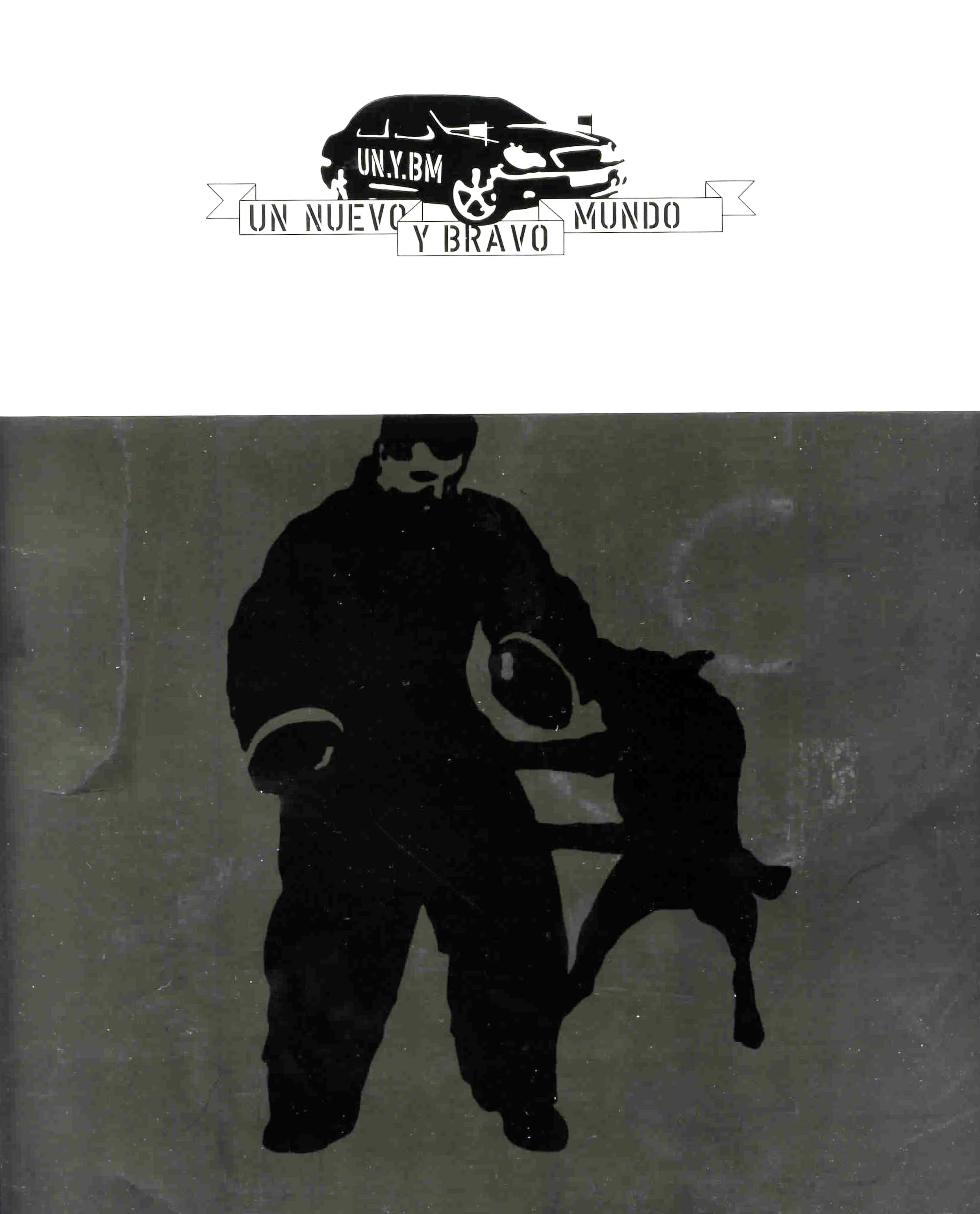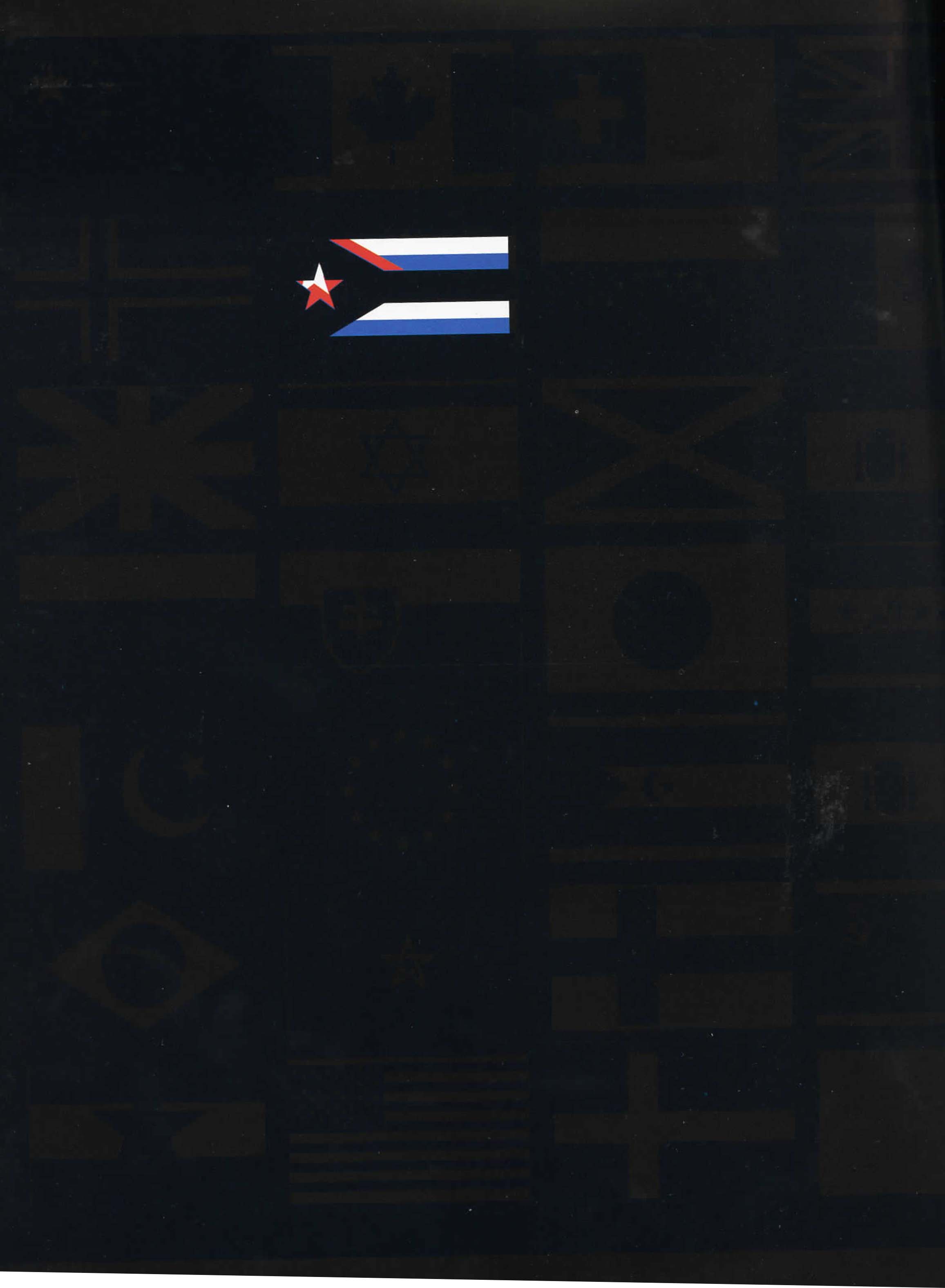El Perro
2005
From: El Perro. “Punto de vistas: Sospechas,”Un Nuevo y Bravo Mundo, Ed.El Perro, Regional Minister for Cultural and Sports Aff airs of the Community of Madrid,Madrid 2005, (illust.) pp. 145 – 155.
ISBN: 84-451-2833-7
Point of views: Suspicions
By El Perro
At the entrance to the exhibition, the institution’s security guard takes a snapshot of each person who enters. When the guard believes that he has detected someone “trustworthy,” he asks that person to please go by the counter to one side of the exhibition entrance. On arrival at the counter, the selected individual receives the explanation that he or she has been selected to record any activity he/she considers suspicious inside the exhibition. To do so, he/she is given a disposable photographic camera, which should be returned to the same guard who issued the camera before leaving the exhibit.
The individual selected from the public enters the exhibition with the camera, and observes the attending public throughout his/her presence in the exhibition areas, trying to concentrate on people’s behaviour. Whenever the individual considers anything “suspicious,” he/she snaps a picture, in an attempt to capture the evidence of the behaviour.
The appreciation of the exhibition on the part of the selected individuals is not focused on the works shown, but on the behaviour of the public (combined with the biases and fears of the individual taking the photo); thus it becomes the content of the exhibit – an exhibit not of works of art (which, not being the focus of attention, become invisible), but of human behaviour. The emphasis is transferred from the works on exhibit to the attitudes and activities of the attending public.
On the other hand, for the rest of the public (only 40 cameras are distributed), the quick and flitting flashes of the cameras that light the place up turn into the work; these lights, which appear hear and there for a second, constitute the visual/visible part of the work.
During this time, the digital photos taken by the guard of all the people entering the exhibition are systematically printed and pinned on the side wall of the counter where the disposable cameras are distributed, thus forming a constant record, which the public will see when exiting the exhibition hall.
This activity is repeated every day. The photos taken with the disposable cameras are developed on a daily basis, and placed in three locations inside the exhibit, chosen for being the places where the guards are positioned. They are not “exhibition” areas, but small areas between the works of other artists. The photos pinned on the wall are a record that will help the guards to identity the “suspicious” individuals who have already visited the exhibit. The photos will continue to be pinned up, with the registry growing and changing every day.
Autobiography. Version Inside Cuba.
A space painted white, two Soviet-made speakers from 70s a security guard, egg cartons, a wooden platform, 16 subwoofers, a disconnected microphone, three unfinished plasterboard walls, a light-bulb.
The microphone is installed in such a way that the speaker’s back is the public, turning his harangue into a sterile discussion with the wall. The obsessive repetition of the same slogan through the speakers ruins its mobilizing potential, rather than accentuate it. Whoever gets up on the platform is not playing a being the authority, but rather at acting in the areas that the authority reserve to create the illusion of participation in the government’s actions.
Autobiography. Version Outside of Cuba.
A space painted in a gradation of white to black, curtains, 16 subwoofers, speakers, archive sound of slogans used in the Cuban Revolution.
The Cuban Revolution has been the object of love and hate for almost half century. Beyond its icons, the revolution has created an image of itself through the values it professes, which have always been expressed through slogans. The slogans mark the moment in which politics and ideology are manifested a unit, it is when they are transformed into the vox populi. These slogans and memories tattooed on the different generations.
The slogans undergo changes to such a degree that, in some cases they contradict or cancel each other, as if the collective memory were buried under layers and layers of new, more enthusiastic proposals.
The Weight of the Island.
Tania Bruguera’s video-installation titled La Isla en Peso, or The Weight of the Island (2001), is an homage to a narrative poem of that name written by the renowned Cuba writer Virgilio Piñera, which captures the chaos, suffering, and beauty of Cuba. In eight videotapes, the artist performs painful or silencing gestures including thrusting her fist into her mouth, wiping saliva from her tongue, and pulling her head back by the hair. In this way, the artist metaphorically explores a range of issues including exile, displacement, endurance, and survival.
Untitled (Kassel, 2002)
This piece is part of the same series that includes Untitled (Havana, 2000). Bruguera worked with people’s memories about Kassel and its ammunitions factory, important during the WWII, but bringing that to the present. She tried to put the audience in a vulnerable state, alluding to the state of a person in a war situation. This state was accentuated even further when they felt a real but impossible to locate threat and suddenly discovered that the sound that scared them was not recorded, but produced by a human being who was looking at them while loading a gun.
The audience is continuously under a powerful and uncomfortable line of 700-watt light bulbs, as if in an interrogation or in a prison. When the lights go out and for a few seconds all becomes pitch black, a video can be seen. The dates in the video are 100 places in the world (one for each day of the exhibition) where, after World War II, there have been massacres for political reasons, ordered by a government or by individuals. The number of casualties in some of these places is as large as (and sometimes larger than) those resulting from some of the attacks suffered during WWII.
Light and darkness are used in the most philosophical and metaphorical way: in relation to knowledge.
This piece was inspired by the history of Germany, which has had such a heavy impact on world history, but it really speaks of the importance of looking at our own immediate reality, rather than looking back on the past, because sometimes they overlap.
Exhibited at: The Living Museum. Museum für Modern Kunst, Frankfurt, Germany, 2003. Documenta 11. Kassel, Germany, 2002.


